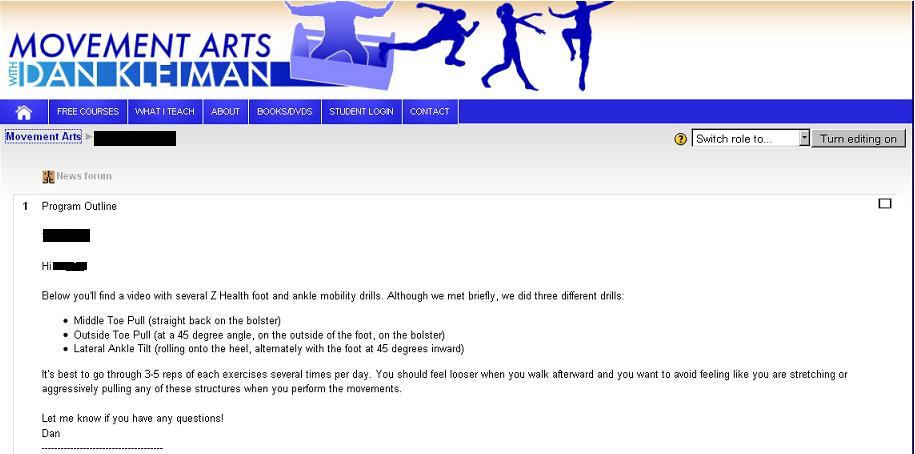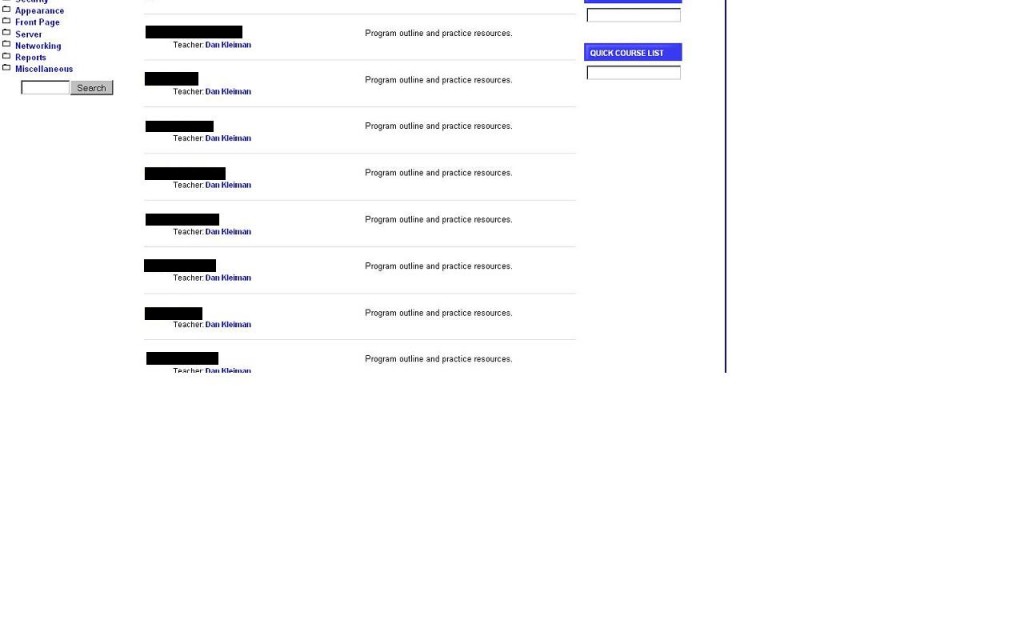This post is the second in a series I'm doing on the backstory of how I came to develop a web-based software application called Trainerfly. You can read more about it here.
For about a year after I decided I need a way to manage all my clients' programs, and share information with them privately, I wrestled with finding the right software. I tried private blogs, but at that time it was tons of work to partition information for each client. I tried creating a private social network for all my clients through Ning, with the idea that I would message people with their individual updates and share videos inside the network, but it never quite had the right feel. Finally, short of building something from scratch, I found Moodle.
Moodle stands for Modular Object Oriented Dynamic Learning Environment, in case you thought people just randomly came up with names for websites and programs on the internet! Basically, Moodle is an open-source online classroom software and it had everything I needed, including a huge development community, to get my clients set up.
Think of a school structure, you have students, courses, and teachers. What I was able to do was create a unique "course" in which I enrolled every client as a "student" and I was the teacher. The nice thing about Moodle is that teachers can do lots of behind the scenes stuff, like editing courses and sharing resources that follow them around the school and most importantly for my needs, control enrollment. That was the element I was missing before. Now, every client could log in and see their program information, inside a course, but they didn't have access to anyone else's information. And, I could share the same info over and over again with different clients, with the click of the mouse.
For example:

What you're looking at above is a screen cap from a typical student program. After my first session with a new client, I would log in to my Moodle installation on my website and create a new client profile, a new course for them and enroll them in that course. Then, I would write up a recap of what we covered. All together it would take me five minutes to set it up and fill in the details, once the system was set up. Eventually, I was also able to share video of the exercises with them, thanks to an agreement with Z Health to test this system.
After subsequent sessions, I would simply update this program section in their course with new information or new links to video, audio, or other type of files. Some trainers that I set up on this system also began to include interactive pieces, where their clients could write back to them through Moodle. Think of a regular classroom environment, with quizzes and reports and you can image the scope of things Moodle was able to do. In fact, I found it could do too much for what I needed, but more on that below...
There was one other huge advantage that I want to point out of having a system like this in place. The typical trainer is juggling 20-30 clients at once throughout their training week. How do they stay organized when everyone has different goals and is working on different material? Well, for me, it became a simple matter of logging in to this system and calling up a particular client's program -- even if I hadn't seen them in 3 months, I could pick up right where we left off! Think about the confidence in me and the value they felt when they walked back into the room after a long absence and I could say, "Joe, how's the right knee doing?".
Here's part of my program dashboard where I could call up anyone's program instantly:

So, for about a year this was working great with my clients. As I mentioned above, I brought the concept to Z Health and they were interested in sharing this with their whole community of trainers. The next time I went out to Phoenix, I presented what I had been working on to a group of about 30 Z trainers and from there, signed up half a dozen to test the system live with their clients.
We'll talk about the interesting things I learned from this "beta test" soon. Eventually, it led me to seek out someone to build brand new web app, from the ground up, based on the concept we proved in Moodle, but ultimately with a more user-friendly environment and scalable infrastructure. Stay tuned!

Share this post
Twitter
Google+
Facebook
Reddit
LinkedIn
StumbleUpon
Pinterest
Email